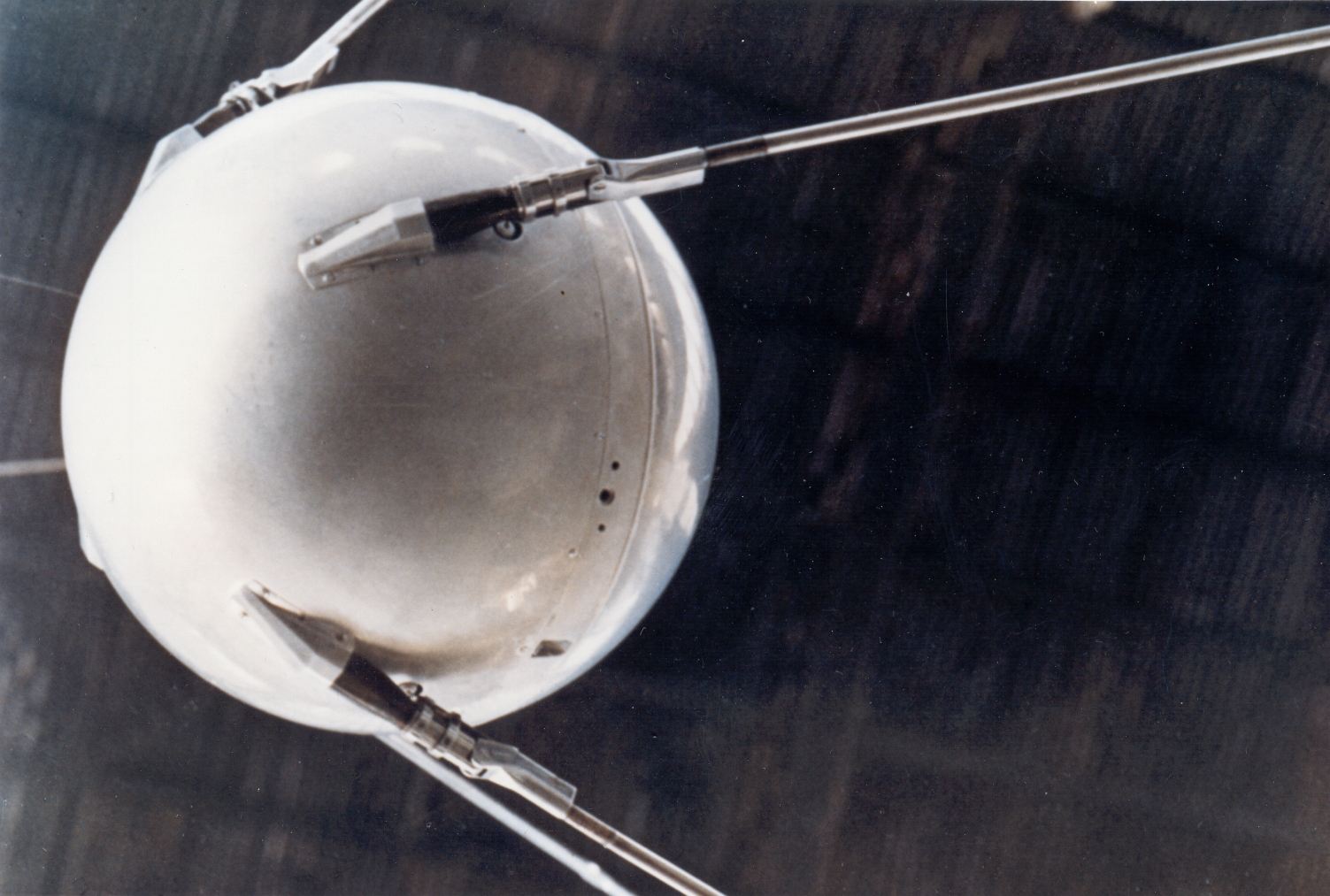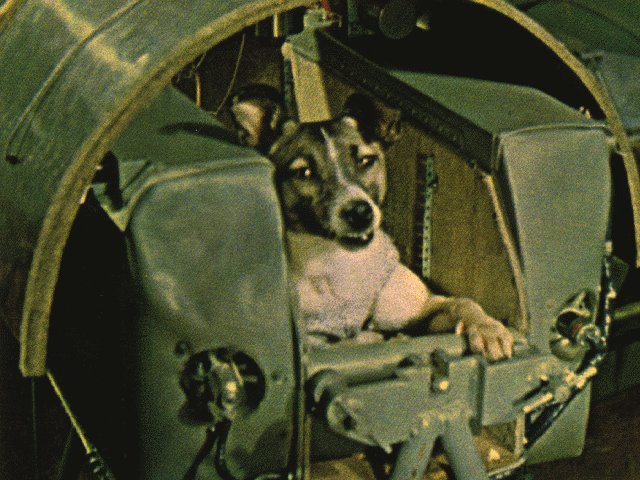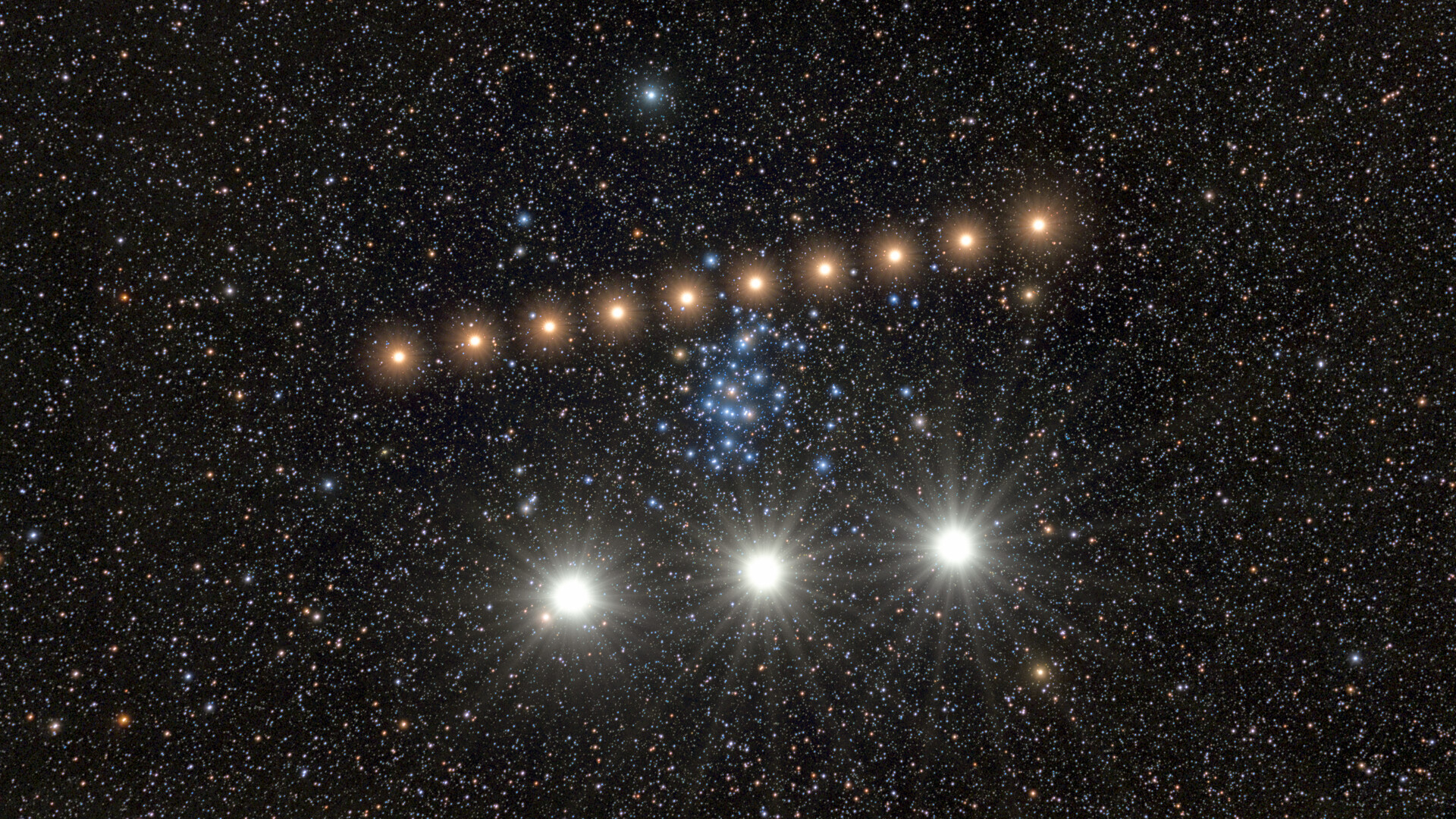Sputnik: The Space Race's Opening Shot

World Space Week 2020 will celebrate the impact of satellites on humanity from Oct. 4 to Oct. 10. Find out how to celebrate here and check out the history of Sputnik, the Soviet satellite that kicked off the Space Age below!
With a single shot, the Soviet Union not only launched the first artificial satellite but also officially inaugurated a "space race" with the United States.
Sputnik – sometimes called Sputnik 1 – went into space on Oct. 4, 1957. The achievement sent a shockwave through the American public, who had felt a sense of technological superiority amid a post-war economic boom. Was the United States falling behind? Could Sputnik be a play on the part of the Soviets to put arms in space? Is space a worthy place to compete for world prestige? These were all questions Americans asked in the months following the beach ball-sized satellite's trip into Earth orbit.
"The American public felt echoes of the Japanese attack on Pearl Harbor less than 16 years before," NASA wrote on the 60th anniversary of Sputnik's launch in 2017. "Americans feared that the Soviets — whom they believed were behind the U.S. technologically after the devastation of World War II — could launch ballistic missiles armed with nuclear weapons at the United States."
Both nations were soon locked in a competition to reach milestones in space first.
Beginning of the space race
Both the Americans and the Soviet Union started satellite development shortly after World War II, according to Russian space expert Anatoly Zak on his website, Russian Space Web. The satellite projects took place under the backdrop of the Cold War, a lengthy time — from the late 1940s to at least the late 1980s, historians generally say — when relations were tense between the Soviet Union and its allies and the United States and its allies (including the North Atlantic Treaty Organization).
The Soviets and the Americans worked on their rocket programs with the help of separate groups of German engineers. During World War II, the Germans had developed ballistic missiles, which were used to lob attacks on London, so their expertise in rocket work was valuable. At the war's end, both countries scooped up as many of these rocket scientists as they could. The United States' most famous German engineer was Wernher Von Braun, who later was chief architect of the Saturn V rocket that sent Apollo astronauts to the moon between 1968 and 1972.
Breaking space news, the latest updates on rocket launches, skywatching events and more!
In the United States, satellite development started as early as 1945, when the Navy's Bureau of Aeronautics began working on a satellite design to send aloft scientific hardware; a year later, the RAND Corporation (under commission from the Air Force) began research on a "World-Circling Space Ship" that could have taken a satellite into space as early as 1951, Zak wrote. However, Zak added, the U.S. administration initially had "little enthusiasm" for such projects, because they "were resting on the laurels of perceived air force and nuclear supremacy in the Cold War with the USSR."
In the Soviet Union, the first rocket efforts came under the leadership of Mikhail Tikhonravov, Zak wrote. Tikhonravov was deputy chief of the top-secret NII-4 research institution in Moscow, which was formed shortly after World War II to start work on a Soviet satellite project. Tikhonravov's team's work drew little attention when he made presentations on it within NII-4 and at the Soviet Union's Academy of Artillery Sciences, but Tikhonravov persisted with the work.
However, Tikhonravov's efforts did get the attention of Sergei Korolev, a famous Soviet rocket designer who was working on the R-3 rocket. Korolev, Tikhonravov and others in the team continued development and presentations through the early 1950s. In 1953, long-time Soviet leader Joseph Stalin died, and Nikita Khrushchev came to power. Khrushchev emphasized rocket development as one of his policies to show superiority over the United States in aerospace, Zak said.
The Soviet Academy of Sciences and several Soviet ministers formally approved the satellite program in 1954, laying the groundwork for more focused development, Zak said. The satellite project received even more support after U.S. President Dwight Eisenhower announced in 1955 that the Americans would send a satellite into space during IGY, which lasted from July 1, 1957, to December 31, 1958. The Sputnik project was formally approved by the Soviet ministry on Jan. 30, 1956, also receiving the personal approval of Khrushchev a few weeks later. The Soviets continued refining their design for launch on an R-7 rocket.
Compromise satellite
Sputnik ("traveling companion" in Russian) was a silver sphere with four long antennas. It was about 22 inches (56 centimeters) in diameter and weighed 183 lbs. (83 kilograms). Circling the Earth every 98 minutes, it used a radio beacon that was able to pinpoint spots on the Earth's surface. [Infographic: Sputnik: How the World's 1st Artificial Satellite Worked]
"Sputnik itself was neither the satellite that the USSR [Soviet Union] had intended to launch, nor was it built to survive for very long," Smithsonian space historian Cathy Lewis reflected on the 60th anniversary of the launch. She said the Soviet plans for a "sophisticated" satellite "fell by the wayside, while the Americans persisted in their determination to launch an exclusively civilian satellite system."
Sputnik may have been a compromise, but in the eyes of the world it was a large feat. The beeping noise it played from space echoed in worldwide radio broadcasts, as well as on television sets. The satellite continued transmitting signals for 22 days until its batteries died; it fell back into the atmosphere and was destroyed in early 1958. The upper stage of the rocket was visible with the naked eye, Lewis added, while the satellite itself was visible in telescopes.
U.S. response, and Sputnik's legacy
Even before the United States had a chance to launch its own satellite, the Soviets moved another step ahead. They launched Sputnik 2 on Nov. 3, 1957, carrying a dog, named Laika, on board. (In the United States, she was nicknamed "Muttnik," according to NASA.) Since the early 1950s, both countries had been launching animals into space — mainly monkeys, chimps and dogs — in order to test their ability to launch a living organism into space and bring it back alive and unharmed.
Unfortunately, Laika's trip into space was one-way only. A re-entry strategy could not be worked out in time for the launch. It is unknown exactly how long Laika lived in orbit — perhaps a few hours or a few days — until the power to her life-support system gave out. Sputnik 2 burned up in the upper atmosphere in April 1958.
The United States' attempt to launch its satellite for IGY failed publicly on Dec. 6, 1957, while launching the Vanguard TV3 satellite on board the Vanguard launch vehicle, Lewis said. So the Americans turned to a parallel rocket development program at the Army's Ballistic Missile Agency, which included participation from von Braun. That project — Explorer 1 — successfully launched on board the Juno 1 rocket on Feb. 1, 1958. Explorer 1 discovered the Van Allen Belts, a radiation field that surrounds the Earth.
Both the United States and the Soviet Union heavily invested in spacecraft development in the coming decade, sending robotic explorers to the moon, Venus, Mars in the 1960s. Eight more Sputnik satellites followed and several other animals were flown into space, testing out spacecraft parameters such as life support and re-entry, and to help researchers better understand how the space environment (including radiation) would affect animals and humans.
Both countries started astronaut programs as well. The first human in space also happened to be Soviet — Yuri Gagarin, who launched on April 12, 1961. The first American, Alan Shepard, launched three weeks later on May 5. A race for astronaut milestones quickly ensued, with the countries competing to be first to do things such as sending two people into space simultaneously, sending three people into space simultaneously, performing a spacewalk, or docking two spacecraft in space.
The Soviet Union and the United States also developed human moon programs, but the Soviet Union abandoned the effort after several failures of its moon rocket, the N-1. America's Apollo 11 touched down successfully on the moon's Sea of Tranquility on July 20, 1969, and Neil Armstrong was the first to alight on the surface. Meanwhile, the Soviet Union launched the first space station, Salyut 1, on April 19, 1971, and developed expertise in long-term spaceflight across several space stations — most notably, space station Mir of the 1980s and 1990s. Russian cosmonaut Valery Polyakov set a record on Mir for longest consecutive stay in space from January 1994 to March 1995, racking up 438 days.
Eventually, the two countries agreed to co-operate in spaceflight as the Cold War thawed and eventually dissipated. The first joint astronaut flight between the nations was the Apollo-Soyuz project of 1975. After the Soviet Union dissolved in 1991, the United States tasked NASA with several space shuttle flights to Mir, which was now run by Russia. Shuttle-Mir included having several American astronauts live on the space station for months at a time. This program laid the groundwork for Russian and American cooperation, which lives on today in the International Space Station program.
Additional resource

Elizabeth Howell (she/her), Ph.D., was a staff writer in the spaceflight channel between 2022 and 2024 specializing in Canadian space news. She was contributing writer for Space.com for 10 years from 2012 to 2024. Elizabeth's reporting includes multiple exclusives with the White House, leading world coverage about a lost-and-found space tomato on the International Space Station, witnessing five human spaceflight launches on two continents, flying parabolic, working inside a spacesuit, and participating in a simulated Mars mission. Her latest book, "Why Am I Taller?" (ECW Press, 2022) is co-written with astronaut Dave Williams.

